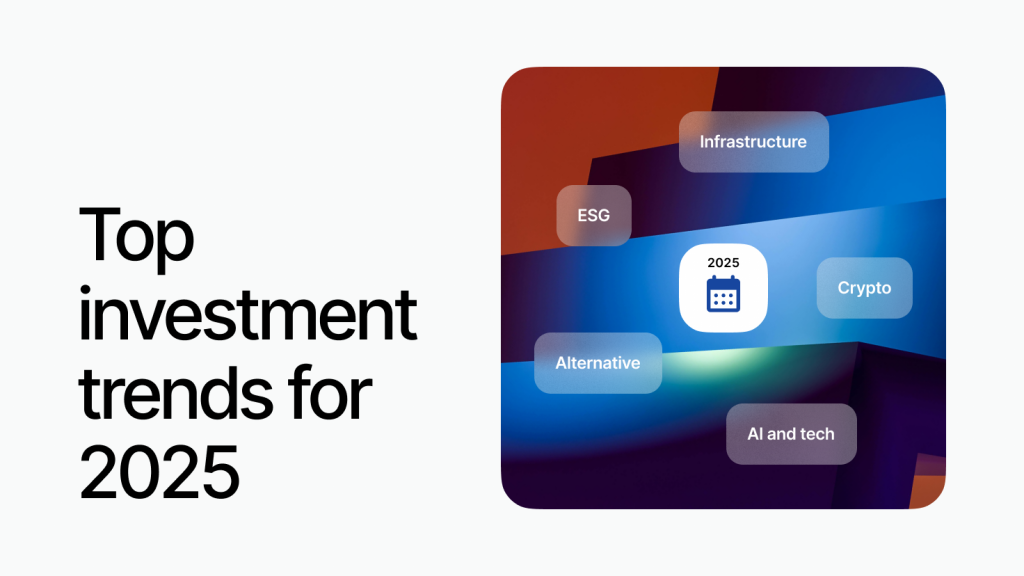January 2025 has so far brought significant shifts in global trade, technology, and economic policy, each with far-reaching implications for investors. The U.S. is moving toward a more protectionist economic stance, proposing broad-based tariffs on imports.¹ The move has raised concerns over global supply chain disruptions, with European manufacturers and exporters preparing for new trade barriers. At the same time, the U.S. withdrawal from the World Health Organization (WHO) forces Europe to reassess its role in global health policy and the security of its pharmaceutical and biotech supply chains.²
Meanwhile, in technology, AI is going through a transformation. China’s DeepSeek AI has unveiled its R1 model, an open-source artificial intelligence system capable of competing with leading Western models at a fraction of the cost. The announcement triggered a sell-off in U.S. tech stocks, reflecting uncertainty over how global AI leadership will advance. For Europe, this accelerates a long-standing challenge: the need to balance AI regulation with investment in high-growth sectors such as semiconductors, automation, and enterprise AI.³
For investors, these developments demand a reassessment of strategy. This guide explores the top investment trends 2025, from AI and tech stocks trends to sector-specific investment trends.
Understand the forces that shape global markets to navigate the latest investment trends and identify emerging investment opportunities.
1. Infrastructure investments
Governments and institutional investors direct billions in capital toward energy grids, transportation networks, and digital infrastructure, which makes infrastructure investments a focal point of economic trends impacting investments in 2025.
Market trends for investors
Global energy markets are evolving as investments in renewables and emerging technologies shape the future of energy production and financing.
Digital infrastructure grows as 5G, data centers, and AI hubs attract capital from private equity and institutional investors.
- Transport and mobility mature as rail networks, EV charging stations, and logistics hubs receive funding from infrastructure programs and private sector investment.
Investment strategies
Direct infrastructure funds offer exposure to real assets in transport, energy, and digital sectors, fitting within broader alternative investment trends.
Private equity targets high-yield infrastructure. This includes urban mobility, energy grids, and data centers.
REITs and listed infrastructure firms provide liquid exposure in the logistics and transport sector.
2. AI and tech stocks
Investment in AI and tech stocks trends remains strong, driven by demand for automation, semiconductor production, and cloud computing.
> Top artificial intelligence stocks to invest in
Market trends for investors
Semiconductor demand remains dynamic as AI-powered applications drive the need for advanced chips, with market shifts influenced by new technological breakthroughs and competitive forces.
Enterprise AI accelerates as businesses integrate automation, cybersecurity, and AI-driven software to enhance efficiency.
Fintech innovation advances as AI revolutionizes digital banking, robo-advisors, and payment processing, leading to competition and capital inflows.
Investment strategies
Semiconductor stocks capture a surge from increasing AI-driven chip demand, reinforcing AI and tech stocks trends.
Enterprise AI stocks benefit from automation, cybersecurity, and cloud computing, which reflects sector-specific investment trends.
Tech sector-focused funds allocate capital to companies developing AI applications across multiple industries, offering investors for emerging investment opportunities.
3. Environmental, social, and governance (ESG) investing and green bonds
Sustainability remains central to market trends for investors, with green bonds and ESG investments driving capital flows.
> What are bonds?
Market trends for investors
Green bond issuance spike as investors seek fixed-income exposure to renewable energy and carbon reduction projects.
ESG equity funds attract institutional capital as companies with strong sustainability ratings outperform in investor allocations.
Corporate sustainability mandates create investment opportunities as stricter emissions targets and reporting requirements drive demand for clean energy and green infrastructure.
Investment strategies
Green bond funds generate fixed income by financing renewable energy and sustainable projects, supporting green bonds and ESG investments.
ESG-focused equity funds invest in companies with high sustainability ratings and regulatory alignment, following sustainable investing trends.
Climate-focused sectors attract capital, particularly in clean energy, sustainable construction, and resource-efficient industries, making them part of sector-specific investment trends.
4. Cryptocurrency
Cryptocurrency investment trends progress in 2025 as regulation stabilizes and opportunities climb. Tokenization of real assets, increased blockchain adoption, and the uptick in stablecoins reshape how investors engage with digital assets.
> A guide to cryptocurrency for beginners
Market trends for investors
Crypto-backed financial products broaden as banks and asset managers introduce investment vehicles tied to digital assets.
Stablecoins gain adoption as investors seek alternatives for payments and wealth preservation outside volatile cryptocurrencies.
Smart contract applications grow as blockchain technology improves real estate transactions, DeFi platforms, and tokenized assets.
Investment strategies
Crypto ETFs provide broad-based exposure to cryptocurrency investment trends with lower risk.
Blockchain-focused stocks allow investors to benefit from alternative investment trends in digital assets.
Balancing crypto with traditional assets helps reduce volatility while aligning with global investment trends.
5. Alternative investments
Alternative investment trends continue to grow as investors seek non-traditional assets beyond stocks and bonds. Private credit, infrastructure funds, and tangible assets provide new opportunities in high-yield lending, inflation-resistant investments, and institutional-grade assets.
Market trends for investors
Private credit markets expand as investors shift from traditional bonds to higher-yielding direct lending opportunities.
Tangible asset investments increase, with capital flowing into commodities and resource-based projects.
Fractional ownership models gain traction, offering entry to private equity and institutional-grade investments.
Investment strategies
Fractional investments lower entry barriers to alternative investment trends in real estate and private credit.
Infrastructure and commodity-backed assets hedge inflation, benefiting from global investment trends.
Balance private and public market investments to manage risk and portfolio resilience.
6. Passive strategies
Investors increasingly turn to rules-based investing, making trends in passive investing a key focus in 2025. Automated portfolio solutions, including robo-advisors, offer algorithm-driven asset allocation without active management. Smart-beta strategies gain traction as investors seek alternatives to traditional indexing.
> What is a robo advisor?
Market trends for investors
Factor-based investing gains adoption as investors turn to smart-beta strategies for risk-adjusted returns.
Robo-advisors attract capital as automated platforms optimize low-cost, long-term portfolio management.
Multi-asset funds grow in popularity as investors seek portfolio expansion through asset allocation.
Investment strategies
Factor-based strategies adjust portfolio weightings, following trends in passive investing through value, momentum, and volatility metrics.
Automated portfolio solutions manage assets dynamically, responding to market trends for investors with minimal intervention.
Multi-asset funds combine equities, bonds, and commodities, creating well-rounded exposure to sector-specific investment trends.
7. Biotech and healthcare opportunities
Breakthroughs in biotechnology, telemedicine, and drug development position healthcare as a major sector-specific investment trend in 2025. Strengthening investments in pharmaceuticals and medtech supports innovation, while shifting demographics drive demand for long-term care and advanced treatments.
Market trends for investors
Biotech innovation accelerates as advances in mRNA, gene therapy, and drug discovery reshape treatment development.
Telemedicine see an uptick as digital healthcare solutions evolve to include remote consultations and diagnostics.
Aging demographics drive demand for long-term care, personalized medicine, and advanced medical technologies.
Investment strategies
Biotech funds provide exposure to emerging investment opportunities in drug development and medical technology.
Dividend-paying healthcare stocks generate stable income, offering defensive positioning within sector-specific investment trends.
Long-term care and diagnostics investments benefit from economic trends impacting investments as demand for healthcare rises.
8. Fintech evolution
Fintech investment trends continue to redefine digital banking, payments, and embedded finance across Europe. Open banking frameworks drive competition, while AI and blockchain-powered financial services reshape lending, wealth management, and fraud detection. Investors gain exposure through publicly traded neobanks, digital lenders, and fintech-focused funds.
Market trends for investors
Neobanks and digital lenders gain market share as consumers shift away from traditional financial institutions.
Embedded finance expands as tech platforms integrate payments, lending, and insurance into everyday transactions.
AI-powered fintech advances as automation enhances fraud detection, credit assessment, and wealth management services.
Investment strategies
Publicly traded fintech firms appreciate digital banking, lending, and financial infrastructure.
Established banks with fintech integration provide stability, balancing exposure to fintech investment trends.
Investment in AI-driven financial services is accelerating, mirroring the broader push for automation and digital transactions.
9. Property markets
Trends in real estate investing shift as evolving work patterns, and infrastructure expansion reshape demand across residential, commercial, and logistics sectors. Energy efficiency requirements further impact property valuations, with sustainability becoming a key investment factor.
Market trends for investors
Rental demand rises as affordability challenges reduce homeownership rates in urban centers.
Logistics and data center investments take shape as e-commerce gains momentum in specialized real estate assets.
Energy efficiency regulations reshape valuations as property owners upgrade older buildings to meet new sustainability standards.
Investment strategies
Direct property investment targets high-demand sectors, including logistics and multifamily housing.
Sustainable real estate funds allocate capital to green-certified properties, aligning with green bonds and ESG investments.
Mixed-asset real estate strategies enhance flexibility, offering liquid exposure to trends in real estate investing.
10. Global opportunities
Global investment trends highlight emerging markets, commodity cycles, and sector shifts as investors look beyond local markets for diversification. India’s expanding economy, Japan’s corporate reforms, and rising commodity demand create new opportunities for long-term development.
Market trends for investors
India’s stock market attracts foreign capital as progress in manufacturing and digital services accelerates.
Japan’s corporate reforms strengthen value investing as governance changes improve shareholder returns.
Commodity investments rise as demand for gold, lithium, and rare earth metals escalate due to inflation hedging and supply constraints.
Investment strategies
Investors are increasing their exposure to India’s stock market and Japan’s corporate reforms as these markets gain momentum.
Commodity-focused assets hedge against inflation, benefiting from alternative investment trends in resource demand.
Regional varied strategies reduce risk, balancing exposure to global investment trends across developed and emerging markets.
Putting investment trends into action with Mintos
The latest investment trends present investors with new opportunities for diversification and passive income. Economic trends impacting investments bring awareness to the importance of balancing traditional and alternative assets, while sector-specific investment trends provide growth potential across multiple industries.
Once investors identify key emerging investment opportunities, the next step is to get started.
Build a diversified portfolio with Mintos
- Loans – Earn regular interest payments, diversify across sectors and regions, and choose between automated or hands-on investing.
- Bonds – Invest from €50, earn fixed returns, and benefit from fee-free investing.
- Passive real estate – Generate monthly rental income from property-backed investments with a lower entry point than direct ownership.
- Smart Cash – Access an AAA-rated money market fund that offers higher interest than traditional savings with same-day withdrawals and no fees.
Disclaimer
This is a marketing communication and in no way should be viewed as investment research, advice, or a recommendation to invest. The value of your investment can go up as well as down, and you may lose part or all of your invested capital. Past performance of financial instruments does not guarantee future returns. Investing in financial instruments involves risk; before investing, consider your knowledge, experience, financial situation, and investment objectives.
Any scenarios or examples provided are for illustrative purposes only. They do not guarantee specific outcomes or returns and should not be relied upon when making investment decisions. Actual results may vary based on market conditions, issuer performance, and other factors.
Want to learn more?
1 Anil, A., & Singh, P. (2025, January 29). FACTBOX All of Donald Trump’s tariff threats (M. Samuel, Ed.). Reuters. https://www.reuters.com/world/us/all-donald-trumps-tariff-threats-2025-01-28/
2 Jazeera, A. (2025, January 29). What a US exit from the WHO means for global healthcare. Al Jazeera. https://www.aljazeera.com/news/2025/1/28/what-a-us-exit-from-the-who-means-for-global-healthcare
3 Griffin, A. (2025, January 29). What is DeepSeek? Everything we know about the Chinese AI that has rocked the world. The Independent. https://www.independent.co.uk/tech/deepseek-ai-trump-china-new-b2687622.html

